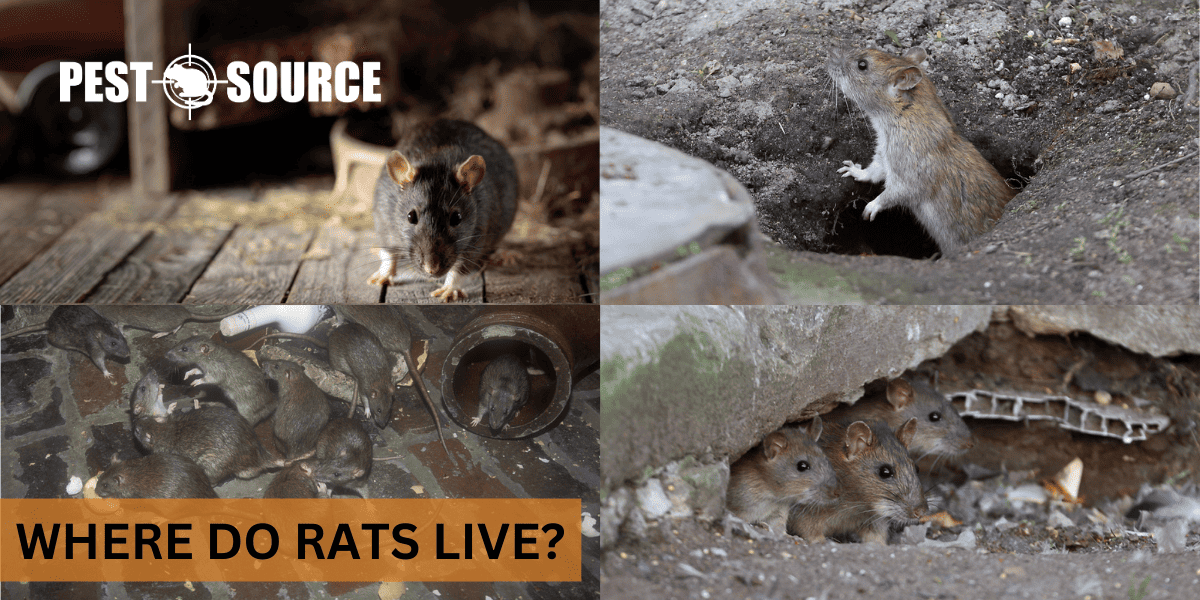Rats are incredibly adaptable and can live in a wide range of environments, from urban areas to rural landscapes. They often reside in places providing shelter and easy access to food, such as sewers, attics, basements, and fields. This post will explore the diverse habitats of rats, emphasizing their adaptability and the implications for human habitation. Understanding where rats live is crucial for effective pest management and prevention strategies.
POINTS
- Rats can live in various environments including urban, suburban, and rural areas, nesting in secluded spots within houses, natural settings like trees, and urban structures like warehouses and subways.
- Implement humane control methods such as properly placed traps and the introduction of natural predators, while steering clear of harmful poisons to avoid negative impacts on other wildlife and the environment.
- Recognize the signs of rat nesting, such as droppings and gnaw marks, and understand their nesting habits to effectively identify and manage rat populations.
- Conduct consistent inspections of your property for indications of rat presence and maintain preventive measures to deter nesting and infestation.
- Participate in community-wide pest control initiatives and keep up with best practices for rat management to ensure long-term effectiveness and environmental health.
Habitats and Nesting Preferences of Rats
Rats are incredibly adaptable creatures that can thrive in a wide range of environments. They are found in urban, suburban, and rural settings, each presenting unique opportunities and challenges for these rodents. Understanding their nesting preferences is crucial in managing rat populations and preventing infestations.
Characteristics of Rat Nests
Rat nests are typically hidden and secluded to protect them from predators and harsh environmental conditions. They are often made from shredded materials like paper, fabric, or plant matter, which rats collect with their strong teeth. In houses, they may nest in walls, attics, or any undisturbed area, while in natural settings, they may opt for trees, burrows, or undergrowth. Urban dwellings, such as warehouses or underground systems, provide rats with ample shelter and resources, influencing their nesting habits.
Nesting Materials
- Shredded paper
- Fabric
- Plant debris
- Insulation
Common Nesting Locations
- Houses: Attics, walls, basements
- Natural settings: Trees, burrows
- Urban dwellings: Warehouses, subways
The Structure and Construction of Rat Nests
Rat nests are not just random accumulations of materials; they are carefully constructed to meet the needs of the rodents. The architecture of these nests can be quite complex, with different chambers serving various purposes, such as nesting, food storage, and waste disposal.
Indoor vs. Outdoor Construction
Indoors, rats often utilize available materials and may even cause damage to property to create their nests. They prefer dark, undisturbed areas and will use the insulation and wiring found in buildings. Outdoors, the construction of rat nests depends on the natural resources available. They may dig burrows or use cavities in trees, creating nests that blend into the environment.
Locating and Understanding Rat Nests
Finding rat nests can be challenging due to the rodents’ secretive nature. However, there are signs that can help you identify their presence.
Signs of Rat Nesting
- Droppings
- Gnaw marks
- Shredded materials
- Unusual noises like scratching
Identifying Rat Nests
In houses, look for rat nests in secluded areas where there is little human activity. In outdoor settings, check for burrows or nests in dense vegetation. Understanding the behavioral patterns of rats is also essential. They may change nests if they feel threatened or if the nest becomes too soiled.
Rat Nesting Behaviors in Varied Environments
Rats are highly adaptable and will adjust their nesting behaviors based on the environment. In trees, they may build nests that are high off the ground to avoid predators. Suburban and rural areas offer different challenges and resources, affecting where and how rats build their nests.
Impact of Human Activity
Human activity greatly influences rat nesting behaviors. The availability of food and shelter can attract rats to human dwellings. Conversely, human efforts to control rat populations can force them to find new nesting sites or adapt their behaviors to avoid detection.



